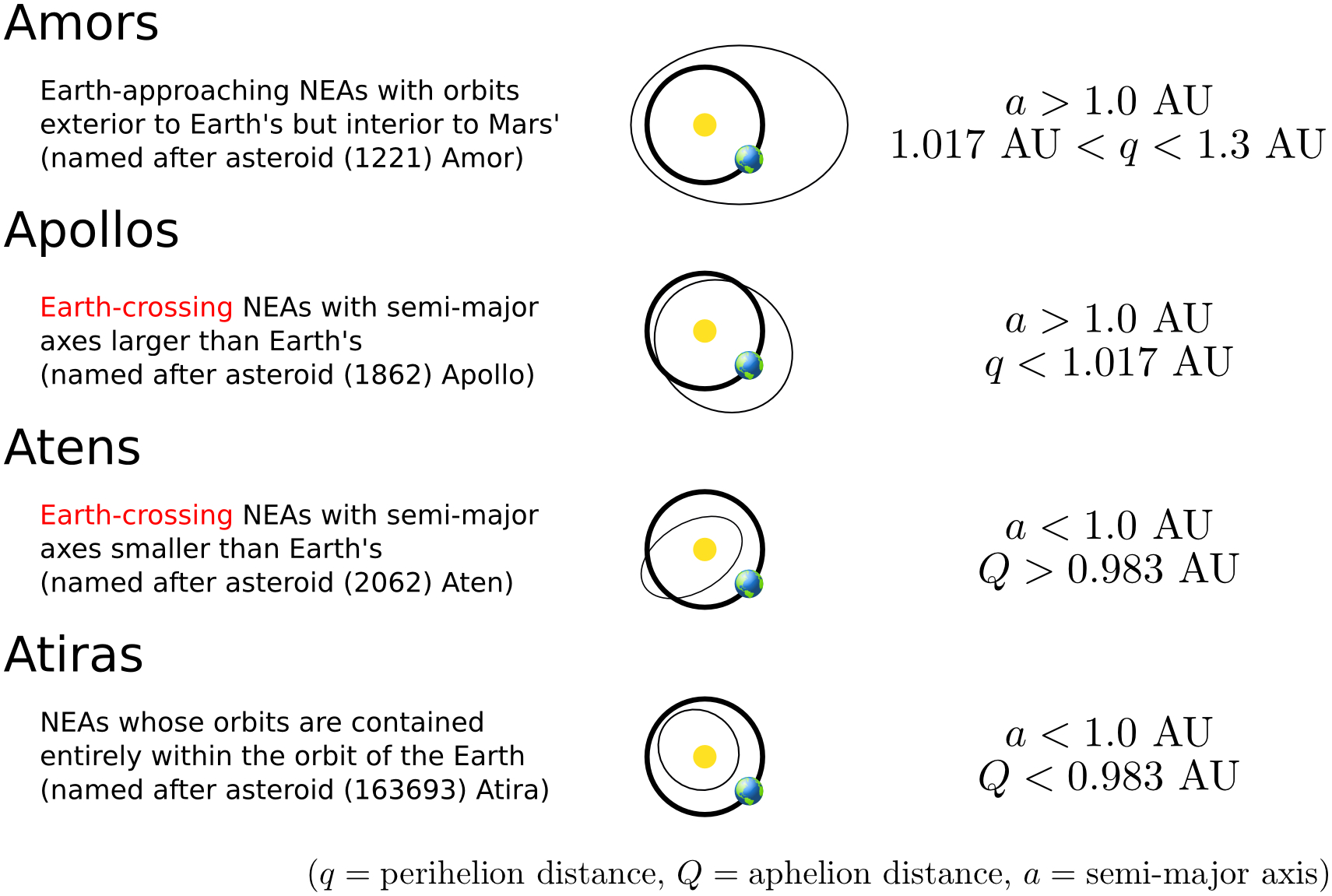Near-Earth Objects (NEOs) which include mostly asteroids, and some comets have orbits that either intersect or bring them very close to Earth's orbit. There are three distinct and dominant orbital classes or groups of NEOs: the Apollos, Amors, and Atens, and a fourth lesser group, the Atiras. These classes are named after the first object to be discovered belonging to the respective group. Specifically, Apollo asteroids are in Earth crossing orbits with semi-major axes larger than Earth's. Aten asteroids are also in Earth crossing orbits with semi-major axes smaller than Earth's. The Amor class contains Earth-approaching asteroids with orbits outside that of Earth, though within the orbit of Mars. The fourth asteroid NEO class, the Atiras, follow orbits that are completely interior to Earth's orbit. Atira's orbit relatively close to the sun making them difficult to discover and observe, rendering them the rarest of the NEO groups. Finally, NEOs also include dozens of comets, also whose perihelion is less than 1.3 AUs, and whose orbital periods are less than 200 years. Learn more on NEO Basics: NEO Groups.

The figure above illustrates the four main classes of asteroid NEOs (not showing short period comet NEOs). Diagram from JPL/Caltech/Center for Near Earth Object Studies.



